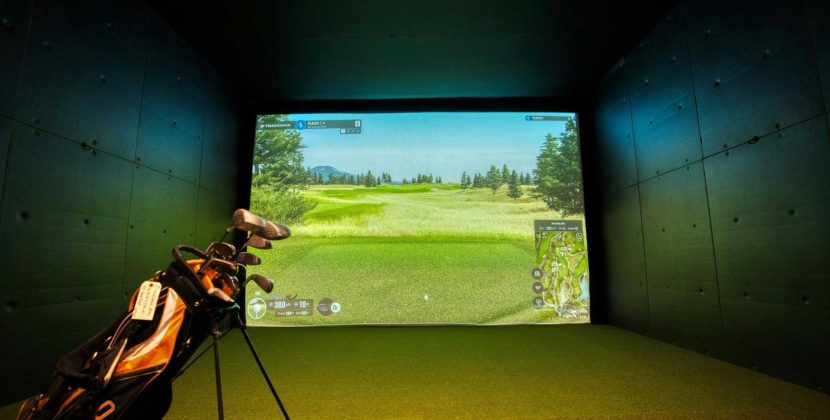
The moment the door to an escape room closes, players are transported. They might be on a pirate ship, in a mad scientist’s lab, or deep within an ancient tomb. The magic of themed rooms is palpable. But this carefully crafted illusion is fragile. The experience can be shattered in an instant by a broken prop, a smudged clue, or a lock that simply will not open with the right code. An escape room is a unique and demanding hybrid; it is both a live theatrical set and a complex, interactive machine. Both aspects require constant, meticulous attention, supported by the right facility maintenance supplies, to function correctly and maintain their immersive quality. Consistent, detailed upkeep is the invisible work that ensures every group of players gets the seamless and thrilling experience they paid for.
The Reset Ritual: Daily and Between-Group Maintenance
The foundation of a functional and fair escape room experience is the reset ritual. This ritual is performed between every single game. It is a non-negotiable series of tasks that must be executed with one hundred percent accuracy. Every key must be returned to its precise hiding place. Every lock must be reset to its starting combination, and every clue must be placed exactly where it belongs. To eliminate human error, create a detailed, photographic, step-by-step checklist. Game masters must follow this checklist for every reset. This process ensures the puzzle chain is intact. It also guarantees that no group is unfairly hindered or helped by a mistake from the previous game.
Before the next group enters, a full function check of every single interactive element is paramount. This means physically turning every key in every lock, testing every magnetic or electronic sensor to ensure it triggers correctly, and confirming that all special effects like blacklights or audio cues are working. This proactive check prevents game-breaking failures that can frustrate players and ruin the experience. A quick but thorough cleaning of all high-touch surfaces, such as locks, props, and doorknobs, is also essential. This removes fingerprints and smudges, maintaining a professional and hygienic appearance for every new team.
The Deep Clean: Preserving the Immersive Atmosphere
Beyond the immediate reset, a regular deep cleaning schedule is essential. It preserves the room’s long-term aesthetic and feel. This is the battle against the inevitable wear and tear that makes a room feel old, tired, and less immersive over time. Dust is the enemy of immersion. A weekly “deep dust” of every surface is essential. This includes high shelves, picture frames, set pieces, and even themed elements like fake cobwebs. This keeps the environment looking intentional and professional, even if the theme is a “dusty” old tomb.
This weekly routine should also include detailed care for props and set dressing. All props must be thoroughly cleaned and inspected for minor damage. This is the time to repair a small scuff on a “treasure chest” or re-glue a loose component on a “strange device.” It is also the time to gently clean the fabric of an “ancient scroll.” The floors and walls also require more than a quick daily sweep. A weekly deep clean of the flooring and spot-cleaning any scuffs or handprints on the walls will ensure the entire environment feels clean and well-cared-for, which subconsciously enhances the players’ perception of quality.
The Puzzle Protectorate: Maintaining the Interactive Core
The puzzles are the interactive core of the escape room, and they require proactive maintenance to keep them running smoothly. For mechanical puzzles, this means regularly lubricating lock mechanisms to prevent them from sticking, tightening any hinges and screws on drawers and boxes, and checking all moving parts for signs of wear. A lock that is difficult to turn because of poor maintenance is a frustrating obstacle, not a fun challenge. This simple mechanical upkeep can prevent many of the most common player frustrations.
The tech and electronic components of the themed rooms demand their own monthly check-up. This includes testing and replacing batteries in all battery-powered props, cleaning the surfaces of magnetic and RFID sensors to ensure reliable contact, and checking all wiring for loose connections. It is also the time to verify that audio and video cues are functioning perfectly without glitches. Crucially, every escape room should have a well-organized system of spares for common failure points. This includes extra copies of every lock, spare keys, backup batteries, and any other critical prop, allowing for an instant swap if an element fails.
The Thematic Guardian: Upholding the Story
The magic of an escape room lies in the details. Maintaining the small, non-puzzle elements that support the story is crucial for sustaining the immersive experience. Paper clues, for example, can quickly become torn, smudged, and bent from repeated use. Laminated clues can peel and get dirty. The staff should have a system to replace these items regularly. This ensures they always look crisp and intentional, not like a worn-out handout from a game played a thousand times.
Sensory elements are also powerful tools for immersion that require regular upkeep. If the room uses specific scents, the team must check and refill the diffusers. If there is a background soundscape, a game master must monitor it to ensure it plays correctly without glitches. The game masters are the first line of defense in protecting these details. The owner should create an easy-to-use system for them to report any small issues they notice. This could be a logbook or a dedicated digital channel. Game masters should report everything from a prop that players consistently misinterpret to a piece of set dressing that has come loose.
The Refresh and Revamp: Planning for the Future
To ensure an escape room remains a high-quality, desirable experience over several years, long-term strategic planning is essential. This begins with budgeting for the inevitable. Owners should create a “wear and tear” budget to plan for the annual replacement of certain high-traffic props and puzzles. Some items are effectively consumables under heavy use and will not last forever. This proactive financial planning prevents a room from slowly degrading because of a lack of funds for replacements.
To keep the experience fresh for repeat customers and to combat online spoilers, it is wise to introduce minor changes every 12 to 18 months. This could involve swapping out one puzzle for a completely new one or changing a key code. Beyond these small updates, a scheduled “down week” should be planned every two to three years. This is the time for a major refurbishment, which can include repainting walls, making significant repairs to the set, and implementing larger puzzle upgrades, ensuring the room continues to feel new and exciting for years to come.
Don’t Break the Spell: The Art of the Invisible Fix
Maintenance is not a background chore in the escape room business. It is a core and continuous part of delivering the customer experience. This is the invisible, consistent work that ensures the magic feels real. It keeps the game fair, functional, and fun. The pillars of this work are clear. They include a flawless daily reset, a thorough weekly deep clean, proactive puzzle maintenance, meticulous attention to thematic details, and strategic long-term planning. Owners can empower their team by creating detailed, room-specific maintenance checklists for their themed rooms. This makes the team the true guardians of the magic, ensuring that for every single group, the spell is never broken.











